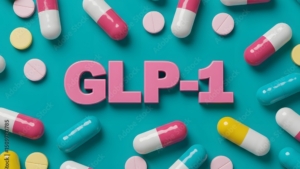
Health: still a defensive position in portfolios?
Healthcare has long been considered one of the most reliable defensive sectors – an effective portfolio buffer when equity markets turn volatile. That’s because hospitals, drug makers, medical device firms and other companies across the healthcare sector benefit from steady consumer demand – still true?
After a difficult first half, healthcare’s defensive capabilities are coming into question, but it outperformed the broader markets on a relative basis. The MSCI World Healthcare Index fell by 10.3% through June 30, 2022, in US dollar terms, compared to a 20.5% decline for the MSCI World Index, extending its steady pattern of downside risk reduction. In fact, healthcare has outperformed the market every year global equities have lost ground since 2000.
Healthcare’s defensive ability hasn’t changed, but the nature of the companies that comprise the sector has. For example, pharmaceuticals made up 82% of the benchmark in 2000. By the end of 2021, however, that share was just 38%. The weighting of biotechnology meanwhile nearly tripled to 12%. The growth of Life science instruments and service providers within the MSCI Index has also been exponential over the past ten years. Healthcare’s evolution has substantially changed the way market forces can impact the sector’s short-term performance, but it has also grown the opportunity set for active investors.
For instance, recent market declines are being driven by sharp sell-offs in growth stocks. Small-cap biotech companies—now a major component of the healthcare benchmark—have been caught in the downdraft. That’s why it’s important to distinguish among individual companies in biotech, or within all healthcare segments for that matter. The goal is to separate those that have the strength to weather the storm from those that might not.
Biotech, with such a large influence on the sector, exemplifies why active stock selection is so important in healthcare investing. Biotech firms’ returns tend to be highly volatile because many investors pin too much of these companies’ growth prospects on the clinical success of new drugs or treatments in their pipelines. Just half of all new pharmaceuticals make it the second phase of testing, and only 8% receive full regulatory approval, according to Biomedtracker. That risk calls for a more fundamentals-based approach in this space. On the other hand, biotech covers a diverse ecosystem, including companies that profit from supplying or equipping its many different industries, which are indeed relatively stable business models.
This article was originally published in European Biotechnology Magazine Autumn Edition 2022.


 NATO
NATO Stifel
Stifel Adobe stock photos - Jim
Adobe stock photos - Jim